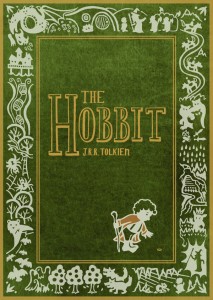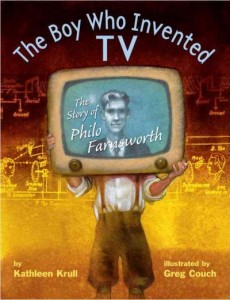As we enter the third week of a month full of CuLtUrE sHoCk, we continue to explore authors, intentions and music that changed the world. Take a peek at what is happening in each classroom this week by reading on...
 Blue Room: During week 3 students will be introduced to JRR Tolkien and the magical worlds and creatures he created through his writing. John Ronal Reuel Tolkien was born in 1892 in South Africa. At the age of 3 he returned with his family to England. Tolkien took an interest in languages at a very early age and even mused about inventing languages at the age of nine (www.tolkien- online.com). Tolkien’s love of language did not subside and in 1916 while recovering from trench fever, began to write. It was not until 1937 when Tolkien’s first fiction novel, “The Hobbit” was published.
Blue Room: During week 3 students will be introduced to JRR Tolkien and the magical worlds and creatures he created through his writing. John Ronal Reuel Tolkien was born in 1892 in South Africa. At the age of 3 he returned with his family to England. Tolkien took an interest in languages at a very early age and even mused about inventing languages at the age of nine (www.tolkien- online.com). Tolkien’s love of language did not subside and in 1916 while recovering from trench fever, began to write. It was not until 1937 when Tolkien’s first fiction novel, “The Hobbit” was published.
Sub -Theme Objectives for Week 3:
- Become familiar with the life of the author, JRR Tolkien and understand why his works have made him so famous.
- Be familiar with the definition of a fiction novel.
- Have been introduced to the world created by Tolkien in “The Hobbit” including the magical characters he created.
- Have participated in a reenactment of “The Hobbit.”
 Green Room: During week 3 students will be introduced to another inventor who contributed greatly to society: Philo Farnsworth. Although his name does not come to mind when one thinks about the TV, Philo Farnsworth is indeed the man who invented the television. The manner in which he proceeded with his invention once created is the cause of his name being absent from inventor history. You will delve deeper into this mystery with your students while reading the book, “The Boy Who Invented TV: The Story of Philo Farnsworth” by Kathleen Krull.
Green Room: During week 3 students will be introduced to another inventor who contributed greatly to society: Philo Farnsworth. Although his name does not come to mind when one thinks about the TV, Philo Farnsworth is indeed the man who invented the television. The manner in which he proceeded with his invention once created is the cause of his name being absent from inventor history. You will delve deeper into this mystery with your students while reading the book, “The Boy Who Invented TV: The Story of Philo Farnsworth” by Kathleen Krull.
Sub-Theme Objectives for Week 3:
- Be familiar with who Philo Farnsworth was and why he is an important part of history.
- Know the definition of “inventor” and “patent.”
- Be familiar with the invention of the television by reading the book, “The Boy Who Invented TV” by Kathleen Krull.
- Have discussed how the invention of the TV has changed society and the manner in which people live their lives.
- Have participated in the creation of an “invention” to be used in today’s world.
Red Room:
Week 3 brings with it another musical adventure! Your tour continues onto the 1960’s, the Woodstock age.
 Music began to change and evolve at an incredible rate after the 1950’s. With the Woodstock age came many new and different approaches to music. It was during this time when the “British Invasion” of American music occurred. However there were many other genres of music being created during this time as well such as: Motown Music, Classic Rock and “Message Music.” During the Woodstock age each of these genres developed their own unique sound and image contributing to the perceived chaos of this time in history.
Music began to change and evolve at an incredible rate after the 1950’s. With the Woodstock age came many new and different approaches to music. It was during this time when the “British Invasion” of American music occurred. However there were many other genres of music being created during this time as well such as: Motown Music, Classic Rock and “Message Music.” During the Woodstock age each of these genres developed their own unique sound and image contributing to the perceived chaos of this time in history.
Sub-Theme Objectives for Week 3:
- Know the history behind the Woodstock age including societal changes that were occurring at this time that may have contributed to the development of the music.
- Be familiar with at least 2 musicians from the Woodstock age. 3. Have created a piece of artwork inspired by the music of the Woodstock age.
This week will not disappoint allowing students to explore, invent, create, dance and more! We hope they are loving this thematic unit as much as we do! As always, should you have any questions or concerns please let us know. We are here to help.



